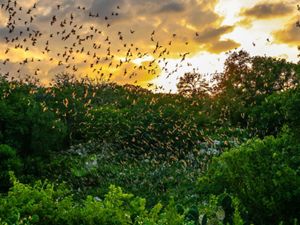Today, the San Antonio metro area is a vibrant and growing region home to more than two million people. It’s also connected to one of the fastest-growing development corridors in Texas. While the population of San Antonio is estimated to top three million people by 2030, the larger metro area between San Antonio and New Braunfels is projected to grow to more than four million people by 2060.
In fact, fueled by rapid growth in recent years, the San Antonio-New Braunfels corridor is not only one of the fastest growing parts of the state but also one of the fastest growing regions in the entire country. Zoom out a little further, and the region between Austin and San Antonio—which has already experienced massive growth over the past decade due to economic development along I-35—is poised to expand even more, with no sign of letting up.

That growth is also expected to concentrate around the interstate. By 2045, 53% of the population between San Antonio and Austin is predicted to live within five miles of I-35, setting the stage for increased land development across the area.
TNC has worked in the San Antonio area for decades, recognizing the importance of protecting its unique landscape and ecological value as the region grows. In fact, TNC has protected over 117,000 acres here, through conservation easements and nature preserves, including the Frank Klein Cibolo Bluffs Nature Preserve and Love Creek Preserve. Together, these protected lands—and their natural benefits—are helping safeguard water quality, open space and species.

Growing with Nature
Alongside this growth in population, residential and business development and future road and highway projects are all anticipated to increase over the coming years. If history is any indication, development often comes at nature’s expense; open space is paved over, trees and grasses are removed, threatening crucial habitat for birds, pollinators and other species. Going forward, it’s critical that developers, builders and conservationists all partner together in the pursuit of sustainable development that relies on—and fosters—the use of natural infrastructure.
By incorporating nature-based solutions into gray development, we can help preserve our state’s unique landscapes and ensure that natural infrastructure plays an integral role in sustaining the region’s growth and prosperity for many years to come.

Natural Infrastructure in the Alamo City
Despite rapid urbanization and development, San Antonio remains home to diverse and valuable natural infrastructure that spans different environments, natural resources and geological formations. Perhaps the most obvious is the San Antonio River and its tributaries, which have also benefited from natural restoration to support a wide range of aquatic and terrestrial species for miles around. Located at the edge of the Texas Hill Country, the area is home to native grasses, thick groves of trees, craggy karst features and numerous creeks and rivers, as well as several city, state and national parks.
One of the most important of these is the Edwards Aquifer—freshwater that literally lies beneath our feet. This vast underground water system has provided drinking water to millions of people in the region for centuries. For over 20 years, nature-based conservation efforts have been instrumental in protecting this resource. Since 2000, the citizens of San Antonio have supported the protection of over 182,000 acres of land over the Edwards Aquifer Recharge Zone. TNC has worked with the city and partners since the beginning to implement the Edwards Aquifer Protection Program working with landowners to secure conservation easements to limit development over the aquifer. This program is one of the most successful nature-based aquifer protection programs in the nation using nature to protect the water quality and habitat of the aquifer.


All of this natural infrastructure represents a priceless resource for the region, providing improved air quality, reduced heat island effects, carbon storage and recreational opportunities that improve the health and wellbeing of residents.
We Can’t Save Nature Without You
Sign up to receive monthly conservation news and updates from Texas. Get a preview of Texas' Nature News email.




